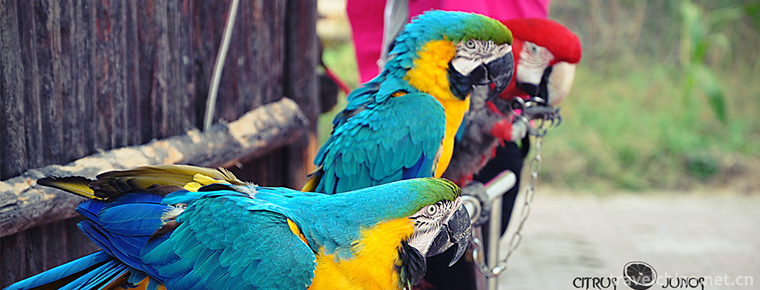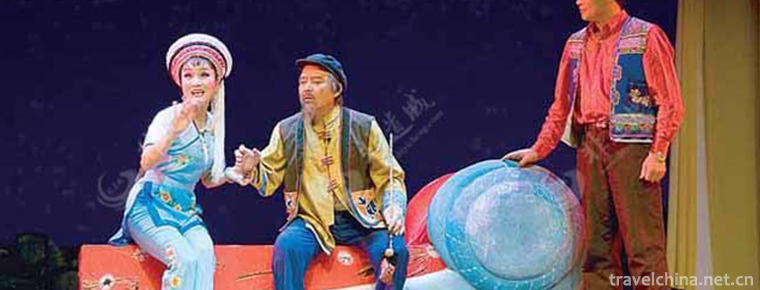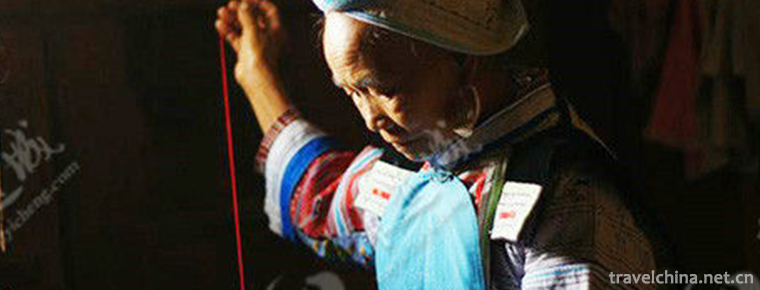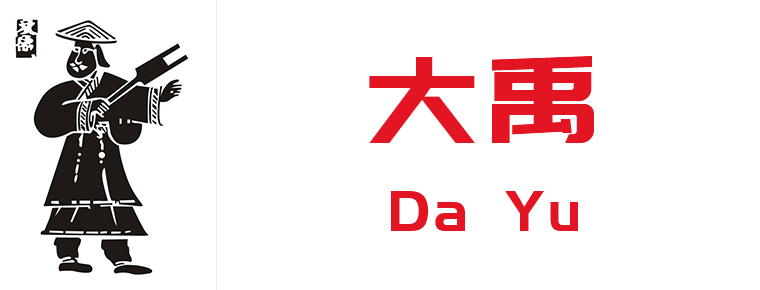Confucius Temple
Nanjing Confucius Temple is located in Gongyuan Street on the North Bank of Qinhuai River in Qinhuai District of Nanjing City and west of Jiangnan Gongyuan Temple, namely Nanjing Confucius Temple, Nanjing Confucian Temple and Wenxuanwang Temple. It is the first highest institution of learning in China and also the four major Chinese Confucian temples. It is the site of ancient Chinese cultural hub and the gathering place of history and humanity of Jinling Mausoleum. It is not only the cultural and educational center of Nanjing in the Ming and Qing Dynasties, but also the cultural and cultural building complex ranking the top in the southeastern provinces. It is now an important part of the Qinhuai Scenic Belt of the Confucius Temple.
Confucius Temple is a group of large-scale ancient buildings, mainly composed of Confucius Temple, Xuegong Palace and Gongyuan, occupying a large area. There are such buildings as Zhaobi, Panchi, archway, Juxing Pavilion, Quixing Pavilion, Weixing Gate, Dacheng Hall, Mingde Hall and Zunjing Pavilion. The Confucius Temple, known as the scenic spot of Qinhuai River, has become the characteristic landscape area of Nanjing, the ancient capital of China. It is the largest traditional ancient street market in China. It is the four bustling cities in China with Chenghuangmiao in Shanghai, Xuanmiaoguan in Suzhou and Tianqiao in Beijing.
The Confucius Temple was first built in 337 years of Sima Yan Xiankang, Emperor Chengdi of the Eastern Jin Dynasty. In 1034, the first year of Jingyou of the Song Dynasty, it was rebuilt as a Confucius Temple. From the Six Dynasties to the Ming and Qing Dynasties, the great families gathered nearby, so there was the saying of "gold powder of the Six Dynasties". Hundreds of famous militarists, politicians and writers, such as Fan Li, Zhou Yu, Wang Dao, Xie An, Li Bai, Du Mu and Wu Jingzi, have made immortal achievements here, and have written a chapter that has been recited for thousands of years.
The Confucius Temple in Nanjing was destroyed in four places and five buildings. The last time it was destroyed was in the artillery fire of Japanese invaders who invaded China in 1937. After the renovation of the Confucius Temple in 1985, it has received more than 100 million tourists, more than 100,000 tourists on weekdays, and more than 300,000 holidays. It is a well-known open national AAAAA-class tourist attraction in China and a well-known tourist attraction both at home and abroad.
Qinhuai River is an ancient place of Nanjing cultural origin, while the Inner Qinhuai River is 4.2 kilometers long from Dongshuitou to Xishuiguan along both sides of the river. Since the Six Dynasties, it has been the place where the Wangzu people live. Businessmen and scholars gathered together, Confucianism flourished, and it is known as "the golden powder of the Six Dynasties".
The Confucius Temple, located on the Bank of Qinhuai River in Nanjing, was built in 337 years by Sima Yanxiankang, Emperor Chengdi of the Eastern Jin Dynasty. According to Wang Dao's proposal, "the emphasis of governing the country is to cultivate talents", Taixue was established on the South Bank of Qinhuai River. At that time, there was only Xuegong, but no Confucian Temple was built.
Confucian temple was built in the first year of Jingyou, Renzong of Song Dynasty (1034) on the Eastern Jin School Palace. Because Confucius is sacrificed, it is also called Confucius Temple. The purpose of building Confucius Temple in front of the Academic Palace is to hope that scholars will follow the path of sages and sages and accept feudal enlightenment.
From the Six Dynasties to the Ming and Qing Dynasties, the flourishing scenes and unique features of the Qinhuai River in ten miles were eulogized by scholars of all dynasties. Located on the North Bank of Qinhuai River, the Confucius Temple was originally a place to worship Confucius. It was built in the first year of Jingyou in the Song Dynasty (1034), and was expanded from the old site of Xuegong in the Eastern Jin Dynasty.
During the Jianyan period of the Southern Song Dynasty, it was destroyed by fire and war.
Shaoxing was rebuilt in the ninth year (1139). It was called Jiankang Fu School.
The Yuan Dynasty changed to Jiqing Road Science.
In the early Ming Dynasty, it was the study of Guozi, merging Shangyuan and Jiangning counties, and then the study of Tianfu.
In the Qing Dynasty, the government schools were relocated to the old site of Guozijian in the Ming Dynasty in the north of the city, which became the county schools of Jiangning and Shangyuan. In the early Qing Dynasty, when the government moved to the former Guozijian, it changed the original place of the Confucius Temple into the county schools of Shangyuan and Jiangning counties.
Xianfeng was destroyed by war again and rebuilt in Tongzhi eight years (1869).
In 1937, during the War of Resistance Against Japan, the Japanese army burned and seriously damaged it.
In 1984, in order to protect the cultural heritage of the ancient capital, the Municipal and District People's Governments, after scientific demonstration and planning by relevant experts, allocated special funds several times for meticulous maintenance and reconstruction over the years. From Taoyedu in the East and 1.8 kilometers west to the Qinhuai River in Zhonghua Gate, a number of cultural relics and tourist attractions have been restored and constructed, as well as a number of bookstores, snack shops, teahouses and restaurants on the commercial street, which are scattered and rich in local traditional features, such as river halls, River houses, song houses and dance pavilions. "Qinhuai Painting Boat" has been around for many years.
In 1985, the ancient buildings of Confucius Temple were renovated, and the surrounding tea shops, restaurants, shops and other buildings were also transformed into Ming and Qing styles. The Confucius Temple complex was composed of Confucius Temple, Xuegong Palace and Jiangnan Gongyuan, which is the essence of Qinhuai scenery. Gongyuan Street near the river is an ancient tourist cultural commercial street. At the same time, according to the pattern of temple fairs formed in history, the eastern and Western markets were rebuilt. Traditional food and snacks are served here. Every year from the first to eighteenth day of the first lunar month, the Confucius Temple Lantern Fair is held.
After more than 10 years of efforts, more than 1 billion yuan has been invested in the restoration and construction of more than 20 and 300,000 square meters of ancient buildings, including Dacheng Hall, Mingde Hall, Zunjing Pavilion, Jiangnan Gongyuan, Wuyi Lane, Wang Xie Guju and Wu Jingzi's former residence. Pavilions, terraces, pavilions and halls are scattered in different places, which reproduce the features of Jiangnan Street and the ancient Qinhuai River Hall in the Ming and Qing Dynasties. Hefang Landscape, Six Dynasties, Ming and Qing Dynasties culture has been further excavated and displayed. It has formed a group of market groups with distinctive characteristics, such as small commodities, antique paintings, flowers, birds, fish and insects, and has become one of the commercial centers in Nanjing.
In 1991, it was named "Forty Best Tourism Resorts in China" and became a well-known tourist attraction, cultural corridor, food center and shopping park at home and abroad.
Confucius is a sacrificial ritual in ancient times. Confucian temples everywhere belong to one of the national sacrificial rituals. Therefore, the characteristics of Confucian temple are that the temple is attached to learning and is integrated with the learning of universities and prefectures (prefectures) and counties. The temple is located either in the front of the school palace or on one side.
Nanjing Confucius Temple is the layout of the former temple and the latter. Confucius Temple, Xuegong Palace and the tribute courtyard on the east side (where people are selected through examinations) constitute three major cultural and educational ancient buildings. Confucian temples in ancient times had certain layout forms.
In general, the front of the temple square is set up with illumination wall, Moxing gate and east-west archway. In front of Moxing gate, a semi-circular pool is set up, which is called "panchi". Panchi is the unique form of Confucian temple, which originated from Zhou Li, while Confucius Temple chiseled the Qinhuai River as Panchi, which is the only case that Tianming River is used as Panchi. On the north bank is the Shilan, with the archway of "World Wenshu". Visitors can take a rest with the archway and browse the scenery of Qinhuai River.
The Dazhaobi of the Confucius Temple is located on the South Bank of Qinhuai River. It was built in 1575, the third year of Wanli in Ming Dynasty. It is 110 meters long and is the longest in Zhaobi of China.
The stone fence beside Panchi was built in 1514 in Ming Zhengde in 9 years, and is now fully decorated. There are Kuiguang Pavilion in the East and Juxing Pavilion in the west, which symbolize the prosperity of literary style. Stone pillars stand on both sides of the square in front of the temple, and the letter "Minister of Culture and Wushu dismounts hereafter" is written to show his respect for "King Xuan of the Supreme Saint Wen". In front of the temple gate, there is a Baimu archway called "World Wenshu". Behind the archway, there is "Weixing Gate". The archway is Yugaoshi archway with six pillars and three gates. The inscription of "Weixing Gate" is inscribed on the middle gate. Between the three doors are embossed with peony brick carvings, with cloud carvings on the pillars, the shape of which is Huabiao. This is the passage for the emperor to go on pilgrimage and worship holes, which is not accessible to ordinary officials and people. On weekdays, it is closed by wooden fences.
There are two old streets in the East and west of the street, namely, Taoguan Ancient and Modern and De Paitiandi Tiandi, which were demolished after the Republic of China. Around the square, there were two pavilions of "gathering stars" and "thinking music". Juxing Pavilion was built in 1983, and the Confucius Temple was rebuilt in 1983.
The Weixing Gate is composed of three single stone archways. There are relief carvings with peony patterns on the walls between the stone archways. In the middle, there are three inscriptions of "Weixing Gate" engraved on the cross lintel of the stone archway. The shape is simple and unadorned. When entering the gate, there are honor gates on both sides of the East and west, with Dacheng gate in the middle, also known as the halberd gate. In feudal times, when pilgrimages and Spring and Autumn Festivals were held in Shuoshuo and Wangwang (the first and fifteenth day of the lunar calendar), officials of prefectures and counties, oracles and instructors entered through Dacheng Gate. Scholars held the door of respect and were not allowed to overstep the rules. The next step is Danxue, with three monuments standing side by side. The East is the monument of the Saint Lady in the second year of Yuan to Shun (1331), the west is the monument of Siya, and the west is the monument of the Xiuxue Palace of Kangxi in the Qing Dynasty. There are two halls around Danxue, with corridors leading to the main hall. The two Lu worship the 72 sages of Confucius.
In the middle is the "Dacheng Hall", with a terrace outside, a place for dancing and music during the Spring and Autumn Festival, surrounded by stone railings on three sides, copper stoves at four corners, tung oil torches, and sacrifices mostly at midnight, like daylight. In the middle of the hall, the position of Confucius, the most holy teacher of Dacheng, was worshipped, and the Four Saints of Asia, Yan Hui, Zeng Shen, Meng Kai and Kong Ji, were shared right and left. On the east side of the hall is a small gate palace for learning.
Dacheng Gate in Ming and Qing Dynasties has five rooms, with ear chambers on both sides for deacons to rest. In the middle, there are three doors. Inside the door, halberds are displayed, drums are set in the east, and clothes are set in the west. Every New Year's Pilgrimage and Spring and Autumn Festival, officials of prefectures and counties enter by Dacheng Gate (the middle gate), and deacons of scholars are divided into side doors. The gate and the hall were destroyed by Japanese weapons. In 1986, Dacheng was built with three wide doors. In the middle of the door was a white jade screen with the inscription of "Rebuilding the Temple of Confucius" and four ancient monuments were erected. Among them, the "Map of Confucius Inquiring Rites" in Qi Yongming's two years was an important monument moved here from the courtyard of Nanjing Municipal People's Government.
The main hall of the Confucius Temple is Dacheng Hall. The present hall was built on the basis of the eight years of Tongzhi in the Qing Dynasty (1869). The back wall of the original Confucian temple was cancelled to integrate it with the academic palace. Seven halls, 18 meters high, double eaves Xie Mountain top. In the middle of the original hall is the "Divine Place of Confucius, the most holy teacher of Dacheng", with Siya Saints on both sides. There are bronze statues of Confucius in the hall, with white jade statues of the twelve disciples of Confucius on both sides. In front of the temple, there is a spacious terrace surrounded by stone fences. It is the place where ancient sacrifices were held for music and dance. The front and front sides of the hall are connected by corridors and luxuries. They were places for worshiping the 72 sages of Confucius and Confucians of all dynasties, and for storing sacrificial utensils. Now it has been transformed into a stele gallery, with more than 30 pieces of calligraphic steles on the walls, which display the famous people of today.
Between the walls of the Confucian temple and the school palace, there are wide passages in the east, West and north. Hundreds of cypress trees have been planted. The ancient trees are towering in the sky, and they are gloomy and pale. At that time, on the Wende Bridge outside the temple, the yellow glazed tile roof of the Dacheng Hall looked magnificent and magnificent in the shade. The empress of the palace was "Ming De Tang". According to legend, the inscription was Wen Tianxiang's regular script in the Southern Song Dynasty, which was later changed from Zeng Guofan to seal script. In the back of the hall is "Zunjing Pavilion". The pavilion was originally a lecture hall for oracles. There are many stereotypes of Confucian classics and many portraits of sages in the upstairs. During the Jiaqing period of the Qing Dynasty, the war destroyed it again.
During the eight years of Tongzhi in the Qing Dynasty (1869), Zeng Guofan and Li Hongzhang rebuilt and expanded one after another to restore their old appearance. However, the main buildings of the temple were destroyed in 1937 by the artillery fire of the Japanese invaders. After liberation, the former Xuegong was part of the people's playground in Qinhuai District, while the "Xianci Temple of Famous Eunuch Township" was replaced by the Confucius Temple Primary School, and the Dacheng Palace site was opened as the Confucius Temple Square. During the Cultural Revolution, the remaining buildings were destroyed again. In 1983, the government allocated funds to rebuild the ancient buildings of the Confucius Temple, and the main buildings were basically restored to their old appearance.
The Eastern and Western markets on both sides of the Confucius Temple were originally the road in front of the Xuegong Temple. Dongyong Road is the main entrance to the Xuegong Palace. There is a square in front of the door, and the book "Pangong" is written. Fangdong is the top-ranking, eye-catching and flower-exploring famous-brand square in Ming and Qing dynasties. Fangxi is a famous workshop for Huiyuan and Jieyuan. On the back of the workshop is a famous workshop for Wuke. There were three ancestral halls and two offices beside East-West Yongdao. After the Republic of China, the imperial examinations were abolished, schools were revitalized, and the palace gradually declined. The ancestral halls and offices were changed into schools, educational bureaus, libraries, and so on. The road of the palace became a vendor's market. From then on, the name of the East and West markets began.
Now the East-West market was built in 1987, with a total floor area of 4400 square meters. It absorbs the space form and scale of traditional commercial streets in China. It adopts the market style of Ming and Qing Dynasty, paves the floor with stone slabs, and stores adopt the "green brick, daiwa, horse-head wall, corridor hanging with flower lattice windows". The stores, temples, markets and streets are integrated and have a rich land. Square features.
After Ming De Tang, Zunjing Pavilion was built in Jiajing period of Ming Dynasty. It used to have five rooms on the upper and lower floors. After Jiaqing of Qing Dynasty, Zunjing Academy was set up here, with books collected upstairs and lectures downstairs. The Zunjing Pavilion rebuilt in 1987 is three stories high, 18.7 meters, with a double-eaved T-shaped ridge at the top, five at the bottom, and three at the second and third floors. The first floor is "Qinhuai Lantern Hall", the second floor is "Qinhuai Cultural Relics and Historical Sites Showroom", and the third floor is equipped with tea seats for visitors to rest and overlook the panoramic view of the Confucius Temple.
Gongyuan, located on the east side of Xuegong Palace, was built in the fourth year of Qiandao in Song Dynasty (1168). It was the place where the Kangfu and county school examinations were built at that time, and the scope was very small. Zhu Yuanzhang, Taizu of the Ming Dynasty, built Jinling, the capital of the Ming Dynasty. He gathered the local test and would try it here. There were many candidates, which could not be applied. During the Yongle reinvention of Ming Chengzu, tribute courtyards began to take shape. Although Yongle's ancestor moved to Beijing in nineteen years (1421), it was still the site of the rural test in the south of the Yangtze River. The Qing Dynasty inherited the Ming Dynasty system, as it used to be, and it was rebuilt during the Daoguang Period. During the Xianfeng period, the Confucian Temple and the Xuegong Palace were under fire, but the tribute courtyard survived alone. Tongzhi reinvented and expanded, with more than 20,000 test rooms, ranking first among all provinces in China.
At that time, Gongyuan started from Yaojiaxiang in the east, from Gongyuan East in the south to Hegongyuan Street in the east, and from Gongyuan West Street in the west to Fuzimiao across the street. From now on, Jiankang Road has been built in the north. The whole courtyard is square. There are 20644 halls (commonly known as test rooms), one for each person. Each examination can accommodate more than 20,000 people. At that time, the main entrance of the Gongyuan was between Jinyonghe Garden and Qinhuai Theatre.
There is a wooden archway in the East and west of the street outside the gate, namely the East and West Yuanmen. Outside the gate, there are a pair of stone lions and two stone archways. On the axis, there are three gates, which are called "Gongyuan", "Starting Astronomical Transport" and "Longmen".
There are Mingyuan Tower, Gonggong Hall and Caution Hall behind Longmen. There is a door behind the hall and a flying rainbow bridge behind the door. The south of the bridge belongs to the outer curtain, and the Feihong Bridge is the boundary between the outer curtain and the outer curtain. Finally, Hengjiantang is the place where the examiner reads the examination papers and evaluates the ranks. During the examination, the curtain is strictly separated from the curtain, and no unauthorized access is allowed. The whole courtyard is surrounded by high walls, with streets outside and shops and houses on the other side. Since the abolition of the imperial examination in Guangxu 31 years (1905), the tribute courtyard has been idle and useless. In 7 years of the Republic of China, it decided to dismantle the tribute courtyard and open up the market. Only 22 inscriptions of Mingyuan Tower, Feihong Bridge and Mingyuan Tower were retained.
Mingyuan Building was built in Yongle of Ming Dynasty and rebuilt in Daoguang of Qing Dynasty. Plane square, three-storey wooden structure. At the bottom, there are four walls, each with circular arches, four eaves from the bottom to the roof, beams and columns interlaced, and windows on all sides. The whole tribute courtyard is clear at a glance. It is the place where examiners and deacons warn and issue orders during the examination. The Mingyuan Building has been established as the historical exhibition hall of the imperial examination system in Jiangnan Gongyuan. More than 100 precious documents and pictures reflecting the imperial examination system in China have been displayed, and 40 numbered houses have been rebuilt as before. The 22 inscriptions of the Ming and Qing Dynasties, originally placed in the courtyard, are now concentrated on the East and west sides of the Mingyuan Tower. They are material materials for studying the evolution of the system of the courtyard and the imperial examination in the Ming and Qing Dynasties.




















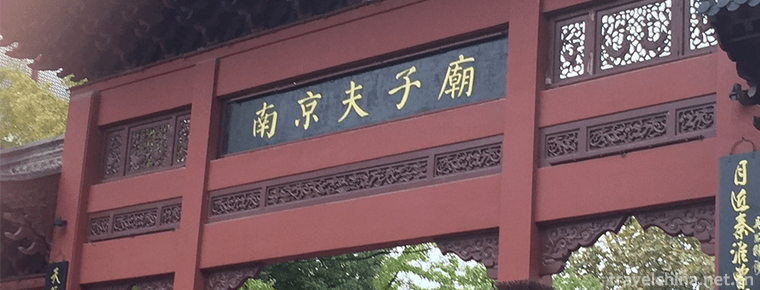
-
Beijing Wildlife Park
Beijing Daxing Wildlife Park is located in the 10,000 Mu forest of Yuyuan Town, Daxing District. It is a large natural ecological park with animal protection, wildlife domestication and breeding and p.
Views: 99 Time 2018-12-26 -
south china botanical garden
The South China Botanical Garden of the Chinese Academy of Sciences, which belongs to the Chinese Academy of Sciences, is one of the most important botanical and ecological research institutions in Ch.
Views: 132 Time 2018-12-26 -
qingdao olympic sailing center
Qingdao Olympic Sailing Center Scenic Spot is located in Fushan Bay, Qingdao City, and Qingdao's landmark scenic spot - May 4th Square offshore, covering an area of about 45 hectares.
Views: 235 Time 2019-02-07 -
Bai opera
After 1949, on the basis of blowing tunes, Bai folk opera "Dabenqu" tunes were further enriched and improved, renamed "Baiju". The Lyric forms are basically sung in Bai language an.
Views: 196 Time 2019-04-03 -
Changshan Cheerful Ballads
In Changshan, the custom of applauding when marrying and bridging a new house has been popular among the people since ancient times for the sake of luck. The content of applause for marriage.
Views: 380 Time 2019-04-16 -
Dagudarengrab
Dagudalenglei Biao is the only Creation Epic discovered, sorted out and published by the De'ang people up to now. It is more than 1200 lines long. The epic is different from.
Views: 391 Time 2019-04-22 -
Miao embroidery
Miao embroidery refers to the embroidery skills inherited by the Miao people in China. Miao embroidery in Leishan County, Guiyang City and Jianhe County of Guizhou Province has different forms and sty.
Views: 137 Time 2019-06-05 -
Shangdang Erhuang
Pihuangqiang in Shangdang area is called Shangdang Erhuang. It is an independent opera with a history of more than 200 years. Locals call it "Tu Erhuang". At present, Shangdang Erhuang is on.
Views: 177 Time 2019-06-13 -
Da Yu
Yu, surnamed Si, is famous for his life. (Yu Yu is the name). History is called Da Yu and Emperor Yu. Xia Hou Shi Chieftain Xia Dynasty The founding king. Yu is Yellow Emperor Great grandson, Zhuan Gr.
Views: 181 Time 2019-09-07 -
Rongxian Giant Buddha
Located in the eastern suburb of Rongxian County, Sichuan Province, the Giant Buddha of Rongxian county is carved in the Tang Dynasty. It is a cliff carved statue of Sakyamuni, 36.67 meters high, 8.76 meters long, 12.67 meters wide, 12 meters high and 3.5 meters wide. It is the world's largest Sakyamuni Buddha (Modern Buddha)..
Views: 329 Time 2020-10-15 -
Meishan social security
In 2019, 2.0419 million people participated in basic endowment insurance for urban and rural residents, 2.676 million people participated in basic medical insurance for urban and rural residents, 297500 people participated in work-related injury insuranc.
Views: 330 Time 2020-12-18 -
Administrative division of Dazhou
In 1950, Daxian district was set up, which belongs to the northern Sichuan administrative region. Daxian special office is located in Daxian county and governs eight counties, including Daxian County, Xuanhan County, Kaijiang County, Pingchang .
Views: 100 Time 2020-12-20
